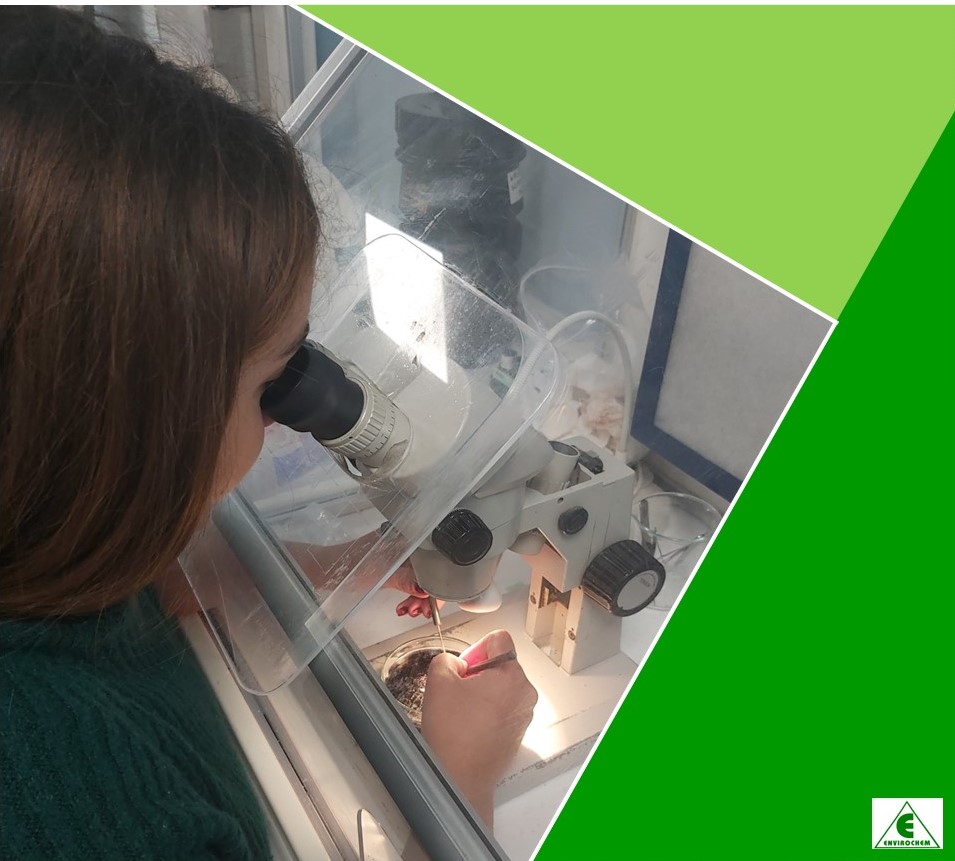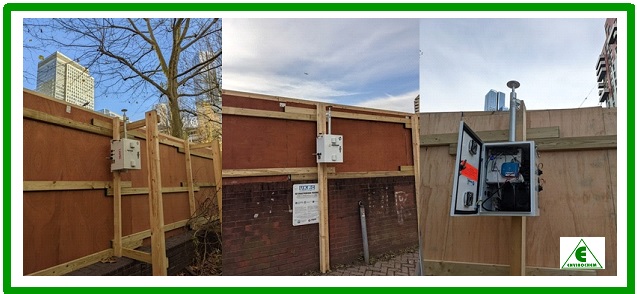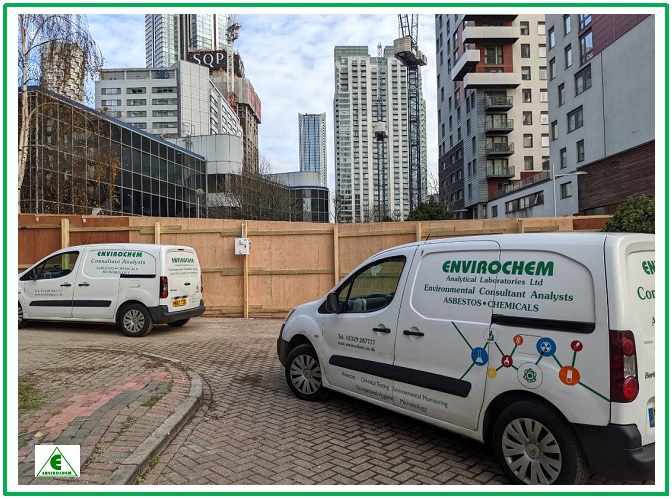Workplace Exposure Limits – The Problems for Demonstrating Compliance
Rachel Powis MSc CertOH LFOH – Occupational Hygiene Technical Manager (Envirochem)
Edited by Dr Alexander Bianchi CFFOH, FRSPH, DipOH, CChem, MRSC Scientific Advisor
Workplace Exposure Limits (WELs) form a fundamental part of the UK Control of
Substances Hazardous to Health (COSHH) regulations, and substances which have been
assigned a WEL are subject to the requirements of COSHH. However, demonstrating
compliance with these exposure limits can pose significant challenges both for employers
and businesses.
One of the main problems is the complexity of reliably assessing worker exposure levels and
making valid interpretations from what are often small data sets generated by typical
monitoring strategies. Even when comprehensively designed, worker exposure sampling
frequently offers only a snapshot of exposure occurring at a specific time. But we know that
wide variations in exposure levels can occur depending upon various factors such as
variance in job tasks and individual work practices (which can generate significant exposure
variability between workers), different exposure profiles such as are encountered in batch
production processes and, along with external influences including environmental factors
and workload, can result in considerable day-to-day variability.
Workplace exposure variability, whilst being dynamic in character, are accepted to conform
to a log-normal distribution. This distribution implies that a small but key number of
workers may be exposed to significantly higher levels of the hazardous substance
compared to the other data making up the spread. This can introduce a degree of
complexity to interpreting exposure results, as samples taken on one specific day under the
prevailing conditions at that time may not be likely to capture the full range of exposures
that workers may experience over longer periods of time.
To give some meaning to limited sampling data and help with navigating such issues, BS EN
689: Workplace Exposure – Measurement of Hazardous Substances – Strategy for Testing
Compliance with Occupational Exposure Limits provides guidance on statistical methods
for demonstrating compliance. This is applied by using a derived benchmark known as the
“statistical lower confidence limit,” to assess whether a workplace is compliant with
exposure limits set by occupational health and safety regulations. For a sample pool of only
three results from workers who are considered to be similarly exposed to the hazard of
concern – often a number logistically achievable from a one-day sampling exercise – this
benchmark is calculated at 10% of the WEL value.
Demonstrating compliance, or conversely exceedance, therefore becomes arguably
simpler with very high or very low exposure profiles but becomes more challenging to
assess in cases where measured exposures fall within a central range of variability. In such
cases, demonstrating compliance with WELs requires additional monitoring efforts and
statistical analysis may be required to accurately evaluate results. The downside of course
is that this approach can be prohibitively costly and often offers no further benefit where
the goal is to ensure adequate control and protect worker health.
COSHH regulations place the responsibility on employers to control and minimise exposure
to hazardous substances in the workplace. This includes conducting risk assessments and
implementing control measures whilst being informed and guided by the sensible
application of monitoring and exposure assessment. Control of exposure is only considered
to be adequate when the Principles of Good Practice are applied, the WEL is not exceeded
and, for carcinogens, asthmagens and mutagens, exposure is reduced to as low as
reasonably practicable.
Therefore, WEL compliance only forms a part of what is required by law, and WELs taken in
isolation should not be considered a hard and fast line between safe and unsafe. In addition,
a further precautionary note is that these exposure limits are not always set at levels that
adequately ensure worker safety. For example, comparing a small number of UK WELs with
other respected international exposure limits (e.g. ACGIH TLVs) suggests a degree of non-alignment and raises the question that they may not reflect the latest scientific evidence
on health effects.
This apparent dissonance between WELs and international standards creates challenges
for businesses, especially those operating across international or global horizons, in both
adequately protecting employee health, especially where WEL compliance is being applied
as the primary indicator used to assess control. In many cases, companies operating
internationally insist that the Occupational Exposure Limits (OELs) applicable in the
countries where they are headquartered take precedence especially where they may be
more conservative than other OELs applicable in different legal jurisdictions. Moreover,
these requirements are often enshrined in company policies on a global scale. Therefore,
for a UK-based entity, it is crucial for employers to go beyond simply meeting the WELs on
several levels as well as taking all necessary proactive measures to ensure the safety and
well-being of their workers and compliance with regulatory requirements in their own host
country.
Indeed, addressing these challenges requires a comprehensive approach that goes beyond
sampling data. This can include implementing additional control measures for continuous
improvement, consulting industry and specialist trade bodies and independent expert
panels in order to stay up to date on best available control technologies. It also includes
reviewing existing control measures with the Principles of Good Practice in mind.
Additionally, employers should stay informed about updates to international standards
that impact their businesses directly as well as scientific research regarding health effects.
By following these guidelines and taking a proactive approach to managing workplace
exposure, employers can demonstrate their commitment to employee health and safety
while also mitigating potential legal risks and reputational damage.
Addressing the complexities of demonstrating compliance with WELs requires a
multifaceted approach that considers the variability of workplace exposures, reviews
controls against a range of indicators, and goes beyond minimum regulatory requirements.
In many cases it also involves continually striving to meet ‘regulatory and industry best
practices’, and, increasingly for companies operating internationally, achieving full range
compliance across even broader horizons.
In summary, more than ever, engaging with occupational hygiene professionals and
seeking their expertise can help businesses navigate the complexities of workplace
exposures and ensure that their employees are adequately protected. While compliance
with WELs is an important aspect of protecting workers from hazardous substances, it is
not the sole indicator of occupational health and safety performance, and employers have
a responsibility to go beyond these limits. By proactively addressing the limitations of WEL-focused sampling strategies and combining other benchmarks, such as the Principles of
Good Practice employers can ensure a more comprehensive approach to managing
hazardous substances and protecting the health and safety of their workers while
delivering sound compliance with the COSHH regulations.
Envirochem is passionate about creating better health outcomes for your personnel, who
in turn will create better outcomes for your business. Our goal is to help you build a healthier
and more productive business through our expertise in Human Health & Environmental
testing & consultancy.
Our specialists work as trusted advisors, becoming embedded in clients, whether we are
scoping out occupational hygiene dust monitoring and consultancy, noise assessments or
asbestos sampling & analysis. Supporting beyond an initial scope, we help you identify
other potential sources of risk which also may need due consideration-from dust explosions
and DSEAR to chemical testing in soil samples. Envirochem is your extended team when it
comes to making your people safer.
Our occupational hygiene monitoring programs can provide you with useful baseline data
across your sites’ operations. This only takes you so far on your safety journey towards best
practice. To make true, continuous improvement in worker health, real world, actionable
steps which facilitate positive change are required. Envirochem can provide expertise and
advice, tailored to your specific needs and site requirements, through bespoke control
audits. The worker exposure data we collect will be used in conjunction with our
consultancy experience, to help determine what you can do to effect the changes you need
to make.
To book a complimentary site visit, where we can discuss your requirements in detail, please
email: john.stead@envirochem.co.uk



